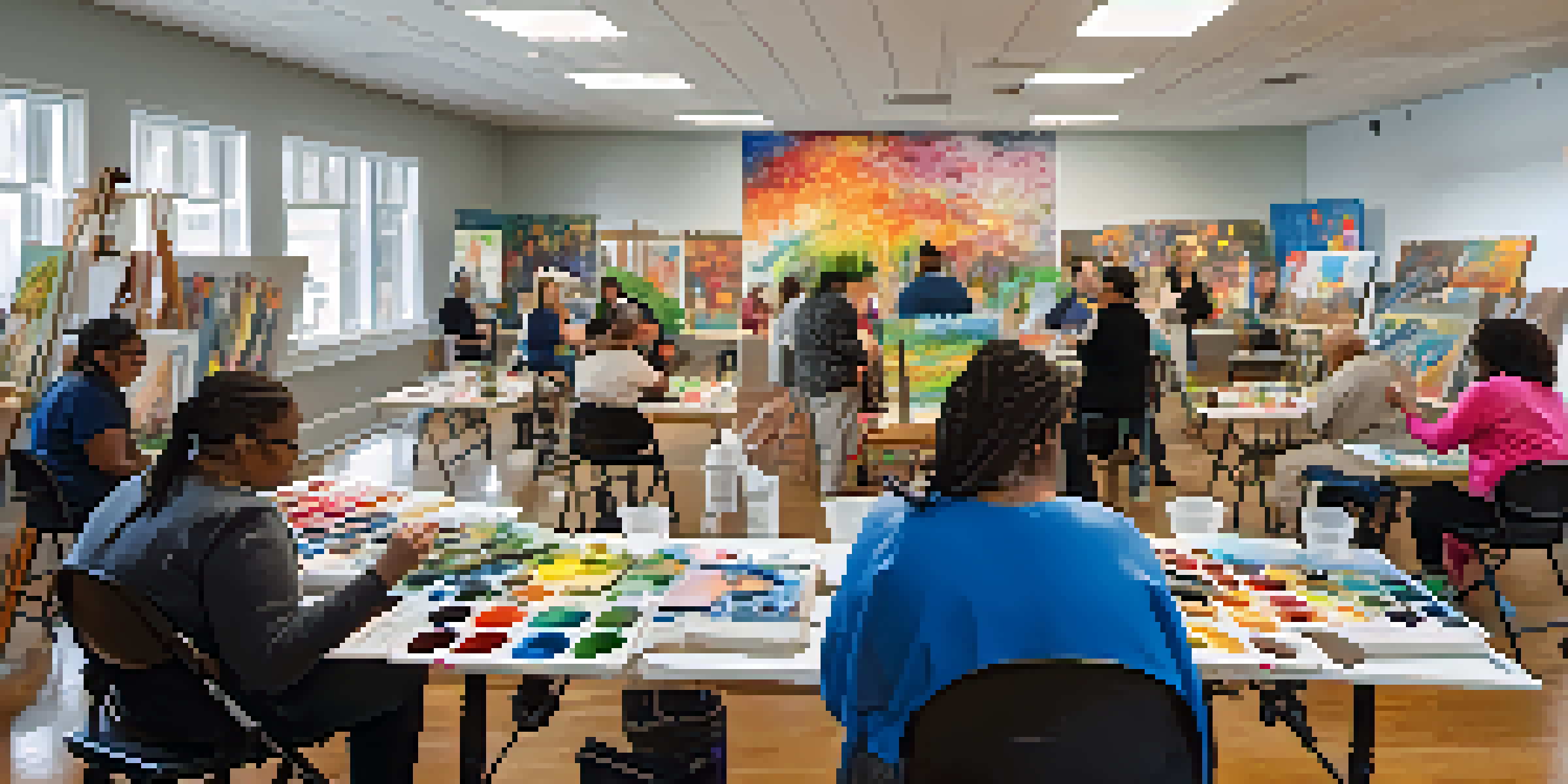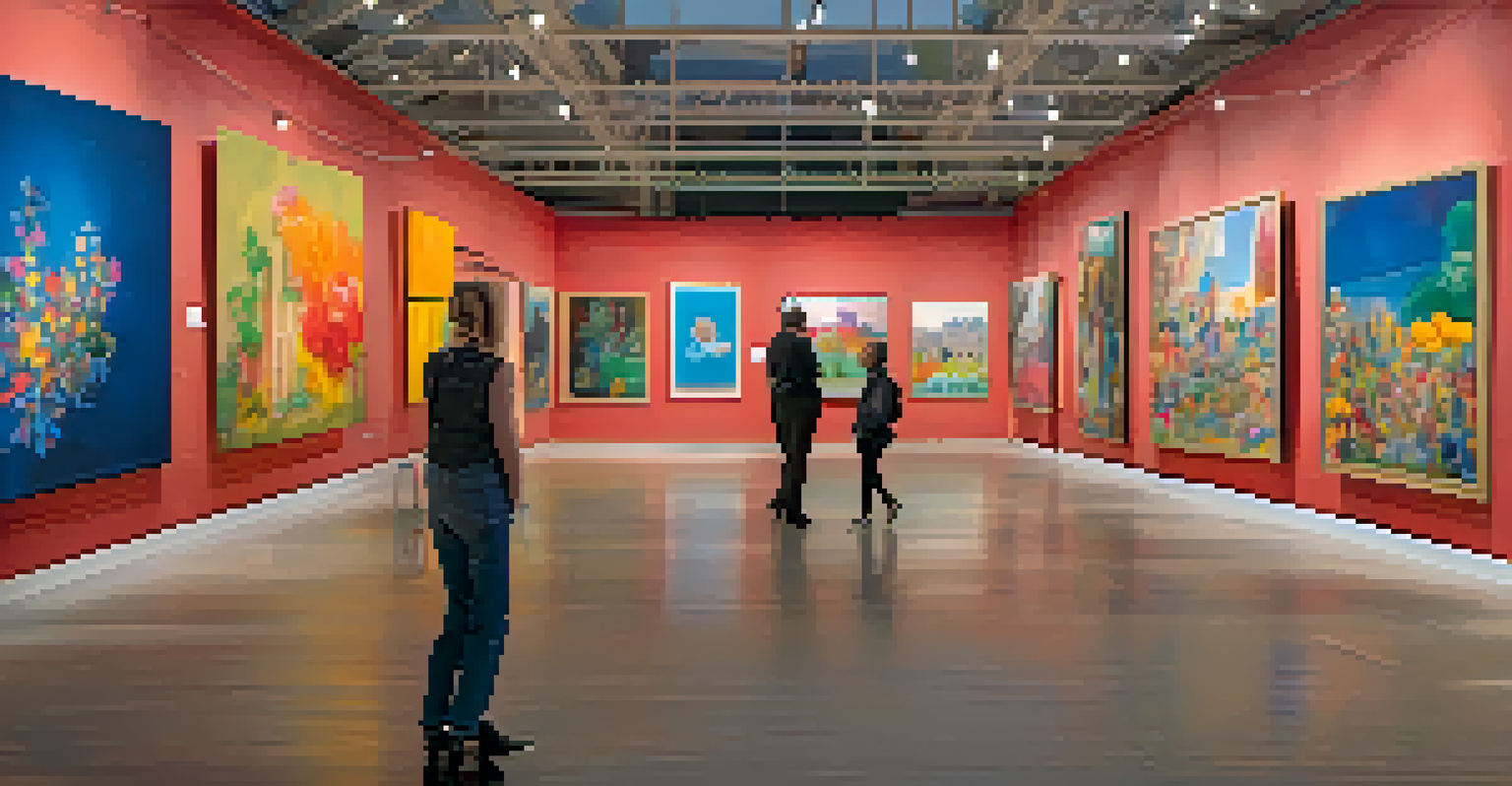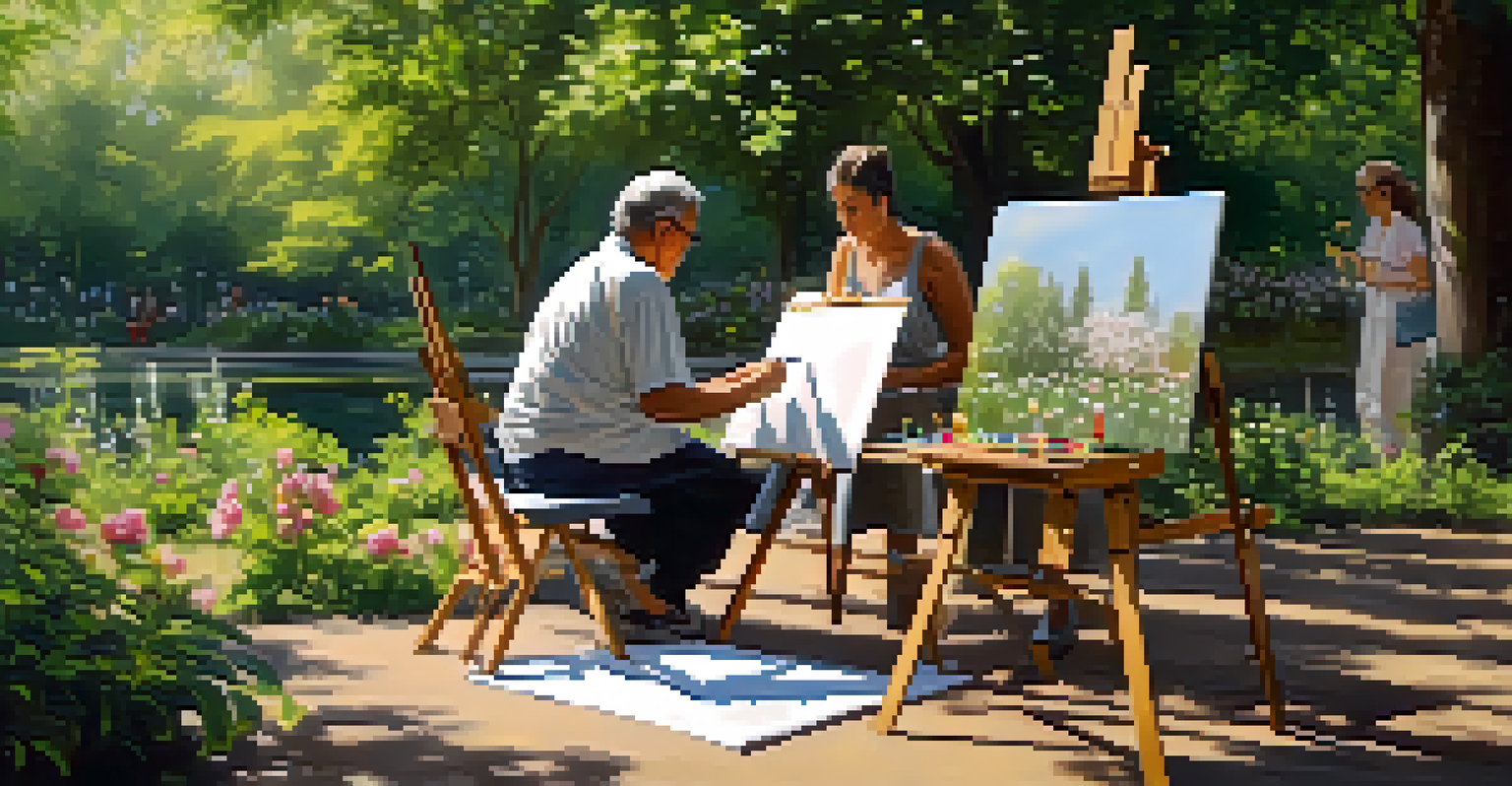How Painting Fosters Community Among Disabled Artists

The Healing Power of Art in Disability Communities
Art has long been recognized as a powerful form of healing. For disabled artists, the act of painting can serve as a therapeutic outlet, allowing them to express emotions and experiences that might otherwise go unvoiced. Creating art offers a sense of agency and control, especially in circumstances where other aspects of life may feel limiting.
Art is not what you see, but what you make others see.
When disabled artists engage in painting, they often experience a profound sense of relief and joy. This process not only nurtures their creativity but also fosters a sense of belonging within their community. As they share their creations, they invite others into their world, creating connections that can transcend barriers.
Moreover, the healing power of art encourages collaboration among artists. Group exhibitions and workshops provide spaces where individuals can learn from each other, share techniques, and inspire one another, ultimately strengthening their community ties.
Building Bridges Through Shared Experiences
One of the most beautiful aspects of painting is its ability to bridge gaps between people. For disabled artists, sharing their stories through art creates a platform for understanding and empathy. When artists depict their realities, they invite viewers to step into their shoes, fostering a deeper connection.

Through group projects, disabled artists can collaborate on large-scale murals or community installations that reflect shared experiences. These collective efforts not only enhance their artistic skills but also emphasize the importance of unity in diversity. Each stroke on the canvas represents a shared journey, creating a tapestry of stories.
Art as Healing for Disabled Artists
Engaging in art provides disabled artists with a therapeutic outlet for self-expression, fostering joy and community connection.
In this way, painting becomes a powerful tool for advocacy. As communities come together to celebrate their artists, they raise awareness about disability issues, promoting inclusivity and acceptance. The art produced is not just a reflection of individual experiences but a communal narrative that highlights resilience and creativity.
Creating Inclusive Spaces for Artistic Expression
Inclusive art spaces are crucial for disabled artists to thrive. These environments encourage participation from everyone, regardless of their abilities. By providing accessible tools and resources, art studios can ensure that all artists can express themselves freely and authentically.
The greatest danger for most of us is not that our aim is too high and we miss it, but that it is too low and we reach it.
Community art centers often host events tailored specifically for disabled individuals, where they can experiment with different painting techniques and materials. These workshops not only offer skill development but also create a sense of camaraderie among participants. Artists can share their unique perspectives while learning from one another.
Furthermore, these inclusive spaces often foster the development of friendships that extend beyond the canvas. As artists bond over shared challenges and triumphs, they cultivate a supportive network. This sense of belonging is invaluable, reinforcing the idea that creativity flourishes in an environment of acceptance.
Exhibitions as Platforms for Connection
Exhibitions provide a unique opportunity for disabled artists to showcase their work and connect with the wider community. These events not only highlight the talents of individual artists but also celebrate the collective creativity of the disabled community. Each piece displayed tells a story, inviting conversation and engagement.
Attending these exhibitions can be transformative for both artists and visitors. For artists, it’s a chance to receive recognition and validation for their work, reinforcing their identity as creators. For viewers, it’s an opportunity to gain insight into the lives of disabled individuals, fostering empathy and understanding.
Inclusive Spaces Enhance Creativity
Creating accessible art environments encourages participation and camaraderie among disabled artists, allowing them to thrive collectively.
Moreover, exhibitions can spark collaborative projects between artists and community members. Inspired by the artworks on display, individuals may come together to create new pieces, further intertwining their stories and experiences. This collaborative spirit enhances community bonds and encourages ongoing artistic dialogue.
Fostering Mentorship Among Disabled Artists
Mentorship plays a vital role in nurturing talent within the disabled artist community. Experienced artists can guide newcomers, offering support and sharing their knowledge of techniques and artistic processes. This relationship not only helps emerging artists grow but also strengthens the community as a whole.
By fostering mentorship, seasoned artists can help younger or less experienced individuals navigate the challenges of the art world. This guidance can include everything from practical skills to navigating exhibitions and networking opportunities. The result is a supportive ecosystem where everyone feels empowered to pursue their artistic passions.
Moreover, mentorship encourages a culture of giving back. As artists grow and succeed, they often feel inspired to mentor others, perpetuating a cycle of support and collaboration. This ongoing exchange of knowledge and encouragement creates a vibrant community of artists committed to each other's success.
The Role of Technology in Artistic Community Building
In today’s digital age, technology plays a significant role in connecting disabled artists. Online platforms allow artists to share their work, collaborate on projects, and engage with a broader audience. Social media, in particular, has become a powerful tool for showcasing art and building community.
Virtual exhibitions and online workshops offer additional avenues for connection. Disabled artists can participate from anywhere, removing geographical barriers that may have previously limited their engagement. This accessibility opens up a world of opportunities for collaboration and networking.
Technology Connects Artistic Communities
Digital platforms facilitate collaboration and networking for disabled artists, breaking down geographical barriers and fostering a sense of belonging.
Additionally, technology can facilitate discussions around disability and art. Online forums and groups provide spaces for artists to share experiences, seek advice, and celebrate each other's achievements. These digital communities foster a sense of belonging, reinforcing that artists are never alone in their journey.
Celebrating Diversity Through Artistic Expression
The diverse perspectives of disabled artists enrich the art community. Each artist brings a unique story and viewpoint, contributing to a broader narrative that challenges societal norms. By celebrating this diversity, communities can foster a more inclusive understanding of art and creativity.
Painting, in particular, allows for the exploration of various themes, including identity, struggle, and triumph. These themes resonate deeply within the community, inviting dialogue and reflection. As artists express their experiences through their work, they challenge stereotypes and broaden the understanding of disability.

Ultimately, celebrating diversity through artistic expression creates a richer cultural landscape. It invites everyone to appreciate the beauty in differences and encourages ongoing conversations about inclusion. When disabled artists are celebrated, everyone benefits from a more vibrant and diverse artistic community.